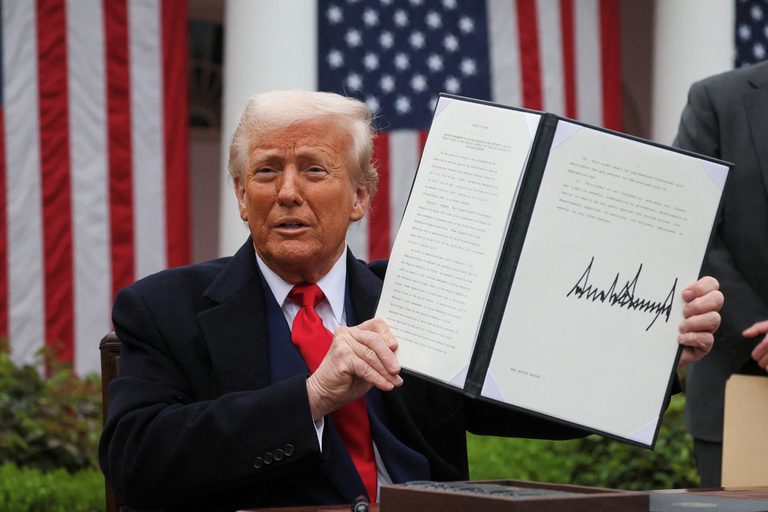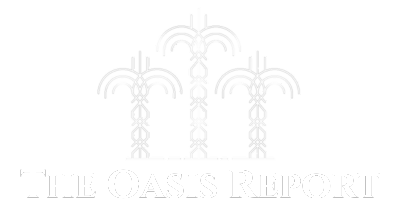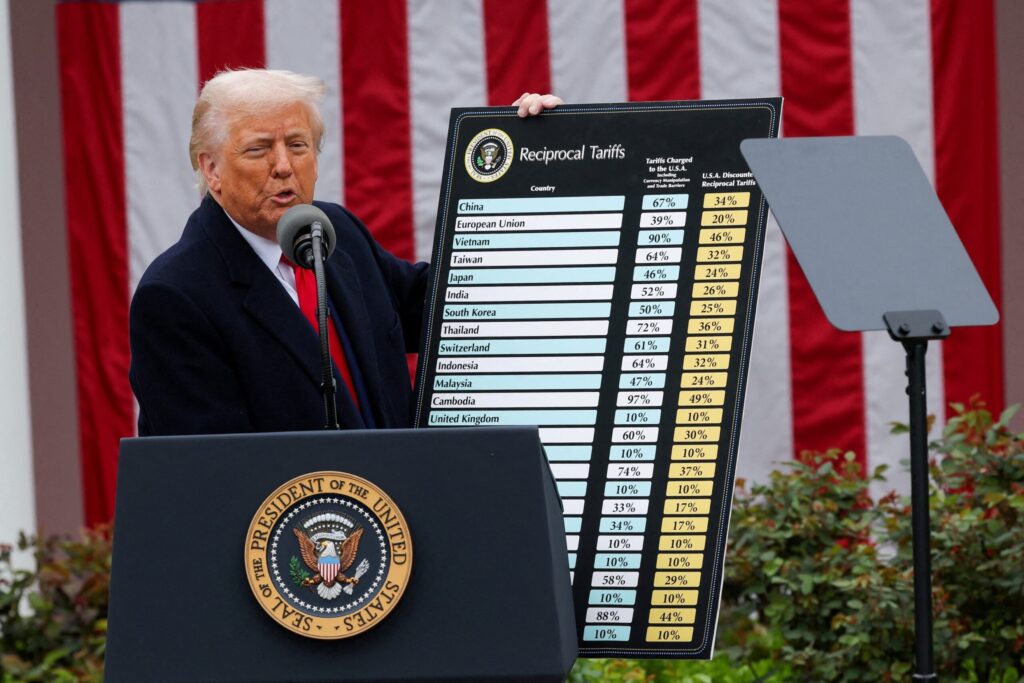10% global tariffs on all imports to US
UAE and Saudi Arabia among those hit
Some goods are exempt
US president Donald Trump unveiled far-reaching new tariffs on Wednesday, including on the United Arab Emirates, Saudi Arabia and other countries in the Middle East.
Speaking from the Rose Garden of the White House, the president outlined a minimum 10 percent universal tariff on all imports into the United States, regardless of origin.
This will go into effect on April 5, according to the White House.
Several dozen countries, including across the Gulf and North Africa, were further singled out on a list that was distributed at the event.
They are being targeted with individual levies with which the US intends to retaliate against their tariffs and non-monetary barriers, such as industry subsidies, value-added taxes and currency support, that the White House claims “unfairly” penalise US products.
“They do it to us and we do it to them. Very simple,” Trump said during the announcement.
These “reciprocal” tariffs will become effective on April 9 and range from 10 percent on goods from the UAE, Saudi Arabia, Egypt and Morocco, to 28 percent on Tunisian imports and 20 percent on those from Jordan.
The reciprocal taxes include the 10 percent baseline, according to the White House. Jordan, for example, will face that plus a 10 percent retaliatory tariff on top of it.
 Reuters/Leah Millis
Reuters/Leah MillisEnergy, “certain minerals” not available in the US, and goods and commodities that are already subject to other Trump tariffs, such as steel, aluminium and cars, will be exempt.
Exports from the GCC to the US amounted to just over $30 billion in 2023, making regional economies not particularly dependent on this trade.
Gulf states, however, see the US as an important security guarantor and investment partner.
As such, industry watchers do not expect GCC states to go to any great lengths to retaliate.
“This is a non-event for US-GCC relations,” Firas Maksad, Middle East and North Africa managing director at the Eurasia Group told AGBI.
The Gulf might try to negotiate its way out of the levies in the coming weeks, however, or perhaps seek additional benefits out of them, such as increased access to American semi-conductors and advanced technology, said Rachel Ziemba of New York-based consultancy Ziemba Insights.
Tim Callen, a former International Monetary Fund official, said Saudi Arabia exports only about $10 billion worth of goods to the US on an annual basis, with non-oil products 6 percent of that.
“Imports from the US, like military and tech, they want, so it wouldn’t benefit from tariffing them,” Callen, now with the Arab Gulf States Institute in Washington, said.
Trump’s planned visit to Saudi Arabia, the UAE and Qatar in May – his first foreign trip of his second term – will act as another incentive for these countries to work with Washington and ensure everything goes according to plan.
Oman and Bahrain are the only Gulf states that have existing free trade agreements with the US, said Justin Alexander, director of Khalij Economics.
“The may want to negotiate, but they will join a long line of allies also feeling slighted,” he said.
Register now: It’s easy and free
AGBI registered members can access even more of our unique analysis and perspective on business and economics in the Middle East.
Why sign uP
Exclusive weekly email from our editor-in-chief
Personalised weekly emails for your preferred industry sectors
Read and download our insight packed white papers
Access to our mobile app
Prioritised access to live events
Already registered? Sign in
I’ll register later



